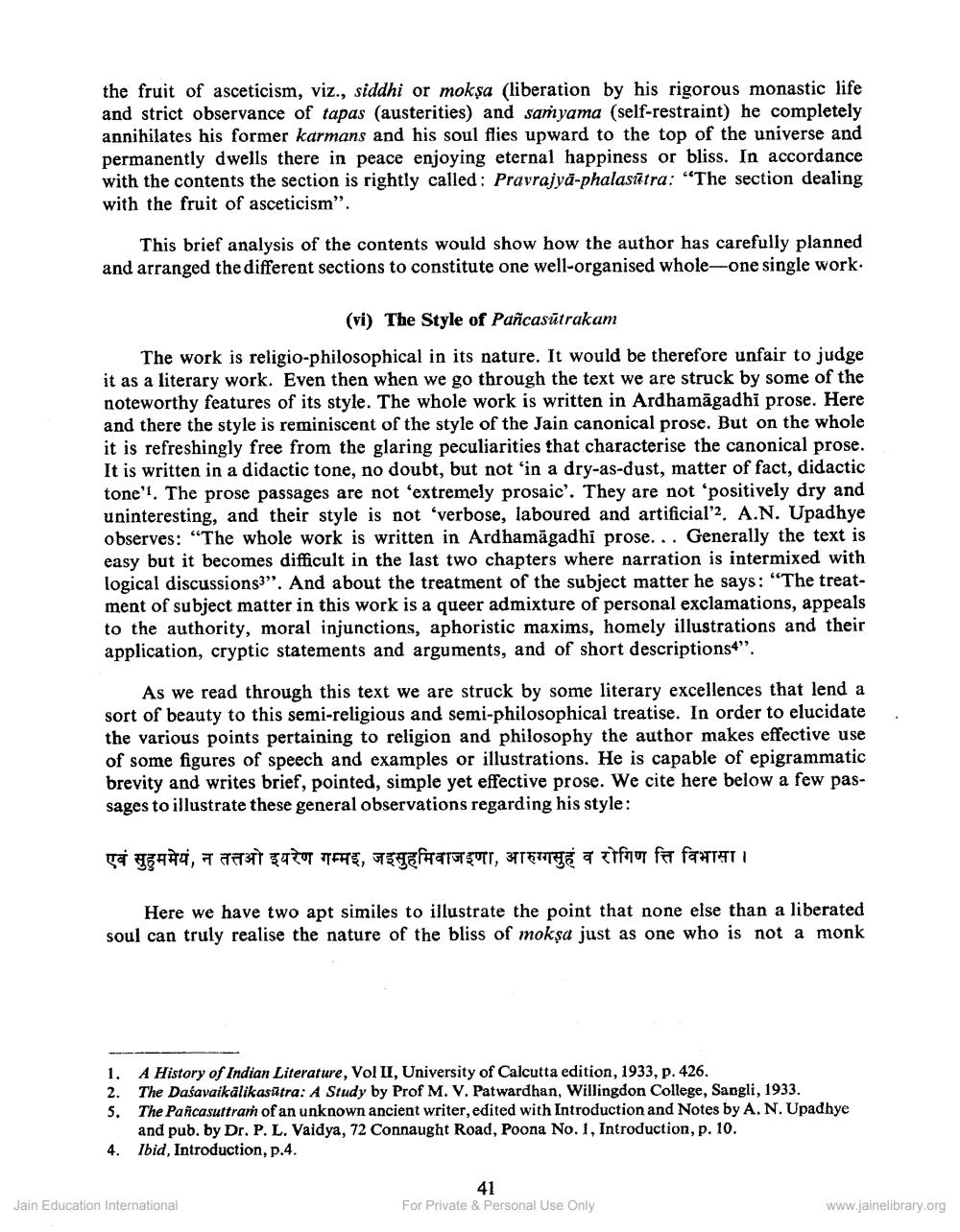________________
the fruit of asceticism, viz., siddhi or moksa (liberation by his rigorous monastic life and strict observance of tapas (austerities) and samyama (self-restraint) he completely annihilates his former karmans and his soul flies upward to the top of the universe and permanently dwells there in peace enjoying eternal happiness or bliss. In accordance with the contents the section is rightly called : Pravrajya-phalasutra: “The section dealing with the fruit of asceticism".
This brief analysis of the contents would show how the author has carefully planned and arranged the different sections to constitute one well-organised whole-one single work.
(vi) The Style of Pañcasūtrakam The work is religio-philosophical in its nature. It would be therefore unfair to judge it as a literary work. Even then when we go through the text we are struck by some of the noteworthy features of its style. The whole work is written in Ardhamāgadhi prose. Here and there the style is reminiscent of the style of the Jain canonical prose. But on the whole it is refreshingly free from the glaring peculiarities that characterise the canonical prose. It is written in a didactic tone, no doubt, but not 'in a dry-as-dust, matter of fact, didactic tone'l. The prose passages are not 'extremely prosaic'. They are not 'positively dry and uninteresting, and their style is not 'verbose, laboured and artificial 2. A.N. Upadhye observes: "The whole work is written in Ardhamăgadhi prose... Generally the text is easy but it becomes difficult in the last two chapters where narration is intermixed with logical discussions3". And about the treatment of the subject matter he says: “The treatment of subject matter in this work is a queer admixture of personal exclamations, appeals to the authority, moral injunctions, aphoristic maxims, homely illustrations and their application, cryptic statements and arguments, and of short descriptions4”.
As we read through this text we are struck by some literary excellences that lend a sort of beauty to this semi-religious and semi-philosophical treatise. In order to elucidate the various points pertaining to religion and philosophy the author makes effective use of some figures of speech and examples or illustrations. He is capable of epigrammatic brevity and writes brief, pointed, simple yet effective prose. We cite here below a few passages to illustrate these general observations regarding his style:
एवं सुहुममेयं, न तत्तओ इयरेण गम्मइ, जइसुहमिवाजइणा, आरुग्गसुहं व रोगिण त्ति विभासा।
Here we have two apt similes to illustrate the point that none else than a liberated soul can truly realise the nature of the bliss of mokṣa just as one who is not a monk
1. 2. 5.
A History of Indian Literature, Vol II, University of Calcutta edition, 1933, p. 426. The Daśavaikälikasūtra: A Study by Prof M. V. Patwardhan, Willingdon College, Sangli, 1933. The Pañcasuttrar of an unknown ancient writer, edited with Introduction and Notes by A. N. Upadhye and pub, by Dr. P. L. Vaidya, 72 Connaught Road, Poona No. 1, Introduction, p. 10. Ibid, Introduction, p.4.
4.
41
Jain Education International
For Private & Personal Use Only
www.jainelibrary.org




